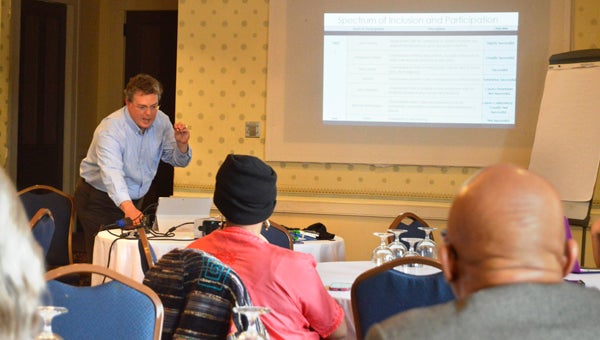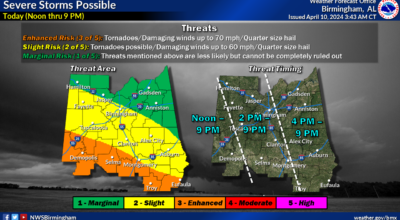EPA sponsors workshop with city leaders
Published 10:43 pm Tuesday, February 23, 2016

Alan Steinbeck of Renaissance Planning gives a slideshow presentation during the EPA’s workshop on Tuesday in the St. James Hotel ballroom.
By Emily Enfinger | The Selma Times-Journal
The United States Environmental Protection Agency (EPA) sponsored a technical workshop on Monday and Tuesday at the St. James Hotel to help community leaders how to make Selma become a healthy and long-term sustainable city.
“Selma is one of the communities across the country that is part of the Making a Visible Difference initiative,” said Alan Steinbeck of Renaissance Planning.
The nationwide initiative is tackling two areas in Alabama, including the 54-mile Selma to Montgomery trail.
The EPA partnered with the U.S. Department of Health and Human Services’ Administration for Children and Families and local agencies to preserve the trail as well as reviving communities along the way.
“It’s technical assistance that is designed to help people understand the issue of equitable development,” Steinbeck said. “That means making sure everyone in the community participates in decision-making, has good access to economic opportunity and enjoys a high quality of life as they live here.”
In 2015, more than 50 communities nationally were identified for focused and coordinated action.
During the two-day workshop, local leaders and the initiative team toured the city and identified Selma’s needs. They then discussed policies, funding sources, designing community strategies and more.
“I think it’s real good because it addresses how we see our city, how we want our city to be and what all we can do about working together,” said Mayor George Evans.
Some of the key issues identified include workforce development, downtown health, maintaining and rehabilitating existing buildings, supporting local businesses and building capacity to succeed.
“In Selma there are a lot of great jobs here, and a lot of good educational opportunities,” Steinbeck said. “But a lot of the people in the city are not connecting with them for one reason or another.”
He said the participants worked with the team on developing ideas to build bridges between residents and opportunities, especially low-income residents, who need skill development and could work those jobs but need assistance getting that connection. The workshop also discussed other issues and how to getting residents to become more involved with current and future projects.
“We are trying to connect the dots of between some of the initiatives the city is already undertaking and how to get everybody in Selma better involved in the community’s long-term well-being,” Steinbeck said. He said the long-term health relies on Selma focusing on moving past a place of remembering and becoming a place for experiences.
“It has an important past and a lot of interesting history, but we are trying to get people to think about the here and now, and what can be done about the local economy to help build this place in a way that is sustainable over the long-term,” Steinbeck said.




